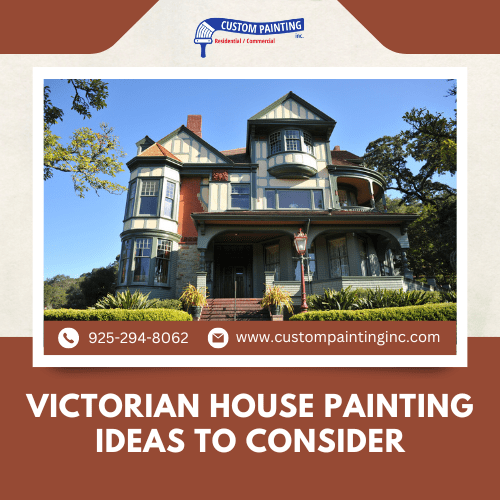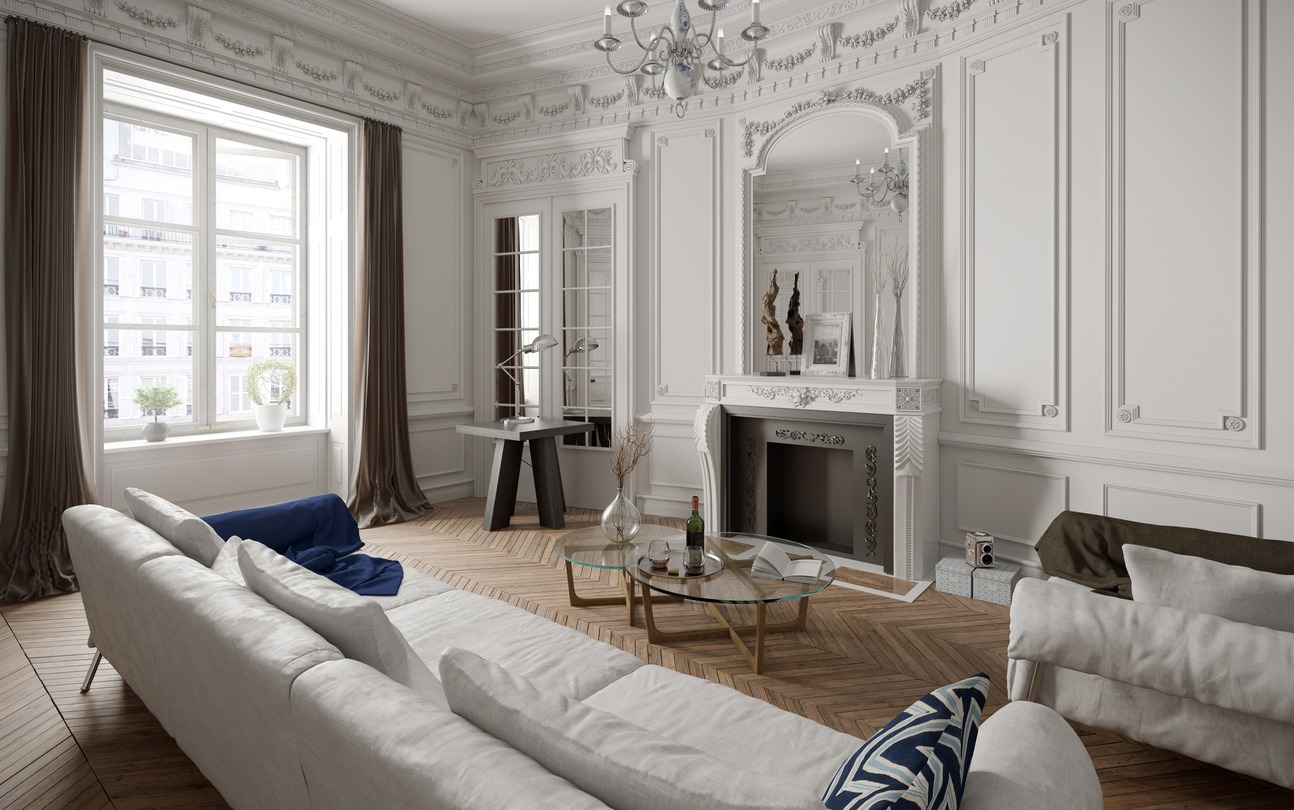Victorian-style architecture is beloved for its intricate details, variety, and vibrant color schemes. If you’ve ever admired the famous Painted Ladies on Postcard Row in San Francisco’s Alamo Square, you know what I mean. These homes are as iconic as the Golden Gate Bridge.
San Francisco still boasts around 16,000 Victorian homes, the original 48,000 of which were built in the mid-19th to early 20th centuries. Even if your Danville home isn’t Victorian, you can capture this classic style through thoughtful painting. Keep reading for top Victorian house painting ideas to bring that charm to your home.
What are the Colors Used in the Victorian Style?
Victorian homes are known for their bold and varied color schemes. During the Victorian era, homeowners often chose deep, rich colors like burgundy, forest green, navy blue, and gold. These colors highlighted the intricate architectural details and added depth and character to the homes.
In the early Victorian period, color choices were more subdued, with earthy tones dominating. As the era progressed, advancements in paint technology allowed for a broader palette, and brighter, more vibrant colors became popular. By the late Victorian era, homes featured striking combinations of multiple colors, creating a distinctive and eye-catching look.
Exterior Paint Colors for Victorian Houses
Victorian homes traditionally use two main types of color palettes: earthy tones and jewel tones. Earthy tones include rich browns, deep greens, and muted reds, commonly used in the early Victorian era. Jewel tones, like sapphire blue, ruby red, emerald green, and amethyst purple, became popular later and are known for their vibrant and luxurious feel.
Today, many people adapt Victorian color schemes to suit contemporary tastes. Pastel hues, such as soft pinks, blues, and greens, can give a Victorian house a fresh and modern look while still nodding to its historical roots. Bold and vibrant colors are also used, often in unexpected combinations, to create a unique and eye-catching exterior.
Tips for Choosing the Right Exterior Colors
- Highlight architectural detail. Use contrasting colors to emphasize ornate trim, brackets, and other decorative features that make the Victorian style distinctive.
- Do your research. If you aim for historical accuracy, research the original color schemes of Victorian houses from the same era or region. Many historical societies and experts can provide guidance.
- Check your neighborhood aesthetics. Look at the surrounding houses and environment. Choose colors that complement the neighborhood while making your home stand out.
- Consider the climate in your region. In hotter climates, lighter colors can help keep the house cool. Darker colors might be better suited for cooler areas.
- Show your personal style: Ultimately, choose colors that reflect your taste and style. After all, your home should reflect your unique taste and personality.
Interior Paint Colors for Victorian Houses
In a Victorian home, each room has its unique characteristics. Victorian interior design is characterized by ornate details, rich textures, and a sense of opulence. Before choosing interior paint colors, it’s essential to understand the distinctive features of each room and how they contribute to the overall design:
Color Choices for Different Rooms
- Living rooms: Victorian living rooms are often the showpieces of the home. Rich, warm colors like deep reds, royal blues, and forest greens can create an inviting and cozy atmosphere. These colors can be complemented by intricate woodwork and decorative elements. Consider using shades of gold or cream for the ceiling and trim to add contrast and elegance.
- Dining rooms: Dining rooms in Victorian homes are often formal and dramatic. Darker colors like burgundy or deep plum can create a sense of intimacy and sophistication, while gilded accents or wallpaper with intricate patterns can further enhance the room’s opulence.
- Bedrooms: Bedrooms in Victorian homes can be a bit softer with colors like lavender, soft blue, or muted pinks, providing a calm and relaxing space. These colors work well with the intricate Victorian furnishings and textiles often found in bedrooms.
Coordinating Colors and Accents
Coordinating colors throughout the interior of a Victorian house is essential to maintain a cohesive and harmonious look. Consider these tips:
- Color flow: Ensure a harmonious transition between rooms by choosing a color palette that flows well. This doesn’t mean every room must be the same color, but the colors should complement each other.
- Accent colors: Use accent colors to highlight architectural details like moldings, wainscoting, and window frames. For instance, a gold or cream trim can beautifully set off darker wall colors.
- Wallpapers: Victorian interiors often feature patterned wallpapers. Consider using wallpapers with floral or damask patterns to add texture and interest. You can use wallpaper as a focal point on one wall or throughout the room for a more traditional look.
DIY Victorian House Painting Tips
Victorian houses have intricate details and unique architectural features, so painting one needs careful planning and execution. Here are some tips:
1. Prepare the surface.
Begin by carefully inspecting the surfaces you’ll be painting. Look for any signs of damage or wear that need to be addressed. Clean the surfaces thoroughly to remove dirt, grease, and old paint. A power washer can be helpful for exteriors.
After cleaning, fix any cracks, holes, or damaged areas. Use filler or caulk to smooth out imperfections. Then, sand the surfaces to create a smooth, even base. This step helps the new paint adhere better.
2. Choose the right type of paint.
Invest in high-quality paint. It may be more expensive, but it lasts longer and looks better. Also, use a primer first before painting to ensure better coverage.
If you’re aiming for authenticity, research and choose colors that were popular during the Victorian era.
3. Follow techniques to achieve a vintage look.
To stay true to the Victorian style, here are some painting techniques to follow:
- Faux Finishes: Use faux painting techniques to mimic textures like wood grain or marble, adding a vintage touch.
- Glazing: Apply a glaze over the base paint to create depth and richness. This technique can give walls an antique look.
- Accent Colors: Highlight architectural details with contrasting accent colors. This brings out the unique features of Victorian design.
Conclusion
When painting a Victorian house, you can stay true to traditional color palettes or use modern interpretations like pastels or bold hues. Whether you’re revamping your exterior with bold hues or choosing historical colors for your interiors, careful planning and attention to detail are key.
If you want to ensure a perfect finish, do not hesitate to call Custom Painting, Inc. at 925-294-8062 or fill out our contact form. Our professional services can help you achieve your desired authentic Victorian charm with expertise and precision.



